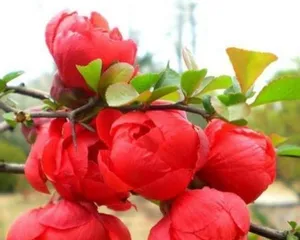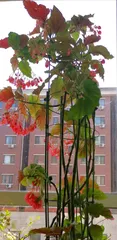Begonia tree bonsai are beloved by gardening enthusiasts for their convenient potting and high ornamental value. However, for beginners, how to care for a Begonia tree bonsai can be a challenge. This article will provide a detailed introduction to the care methods and precautions for Begonia tree bonsai, hoping to help everyone.

I. Cultivation Environment
Selecting suitable environmental conditions such as temperature, humidity, and light is key to the healthy growth of a Begonia tree bonsai. Especially when the temperature is too high, the humidity is too low, or there is insufficient light, it greatly affects the growth of the bonsai. When cultivating a Begonia tree bonsai, choose an environment with appropriate temperature, good ventilation, and sufficient light.
II. Daily Watering
Begonia tree bonsai need to maintain a moist soil environment, but overwatering can lead to root rot. In daily care, it is important to control the amount of water and avoid waterlogging. Generally, water once every 3 days or so, and the frequency can be appropriately increased in the summer.

III. Nutrient Supply
Begonia tree bonsai require nutrient supplementation to ensure healthy growth. You can choose the appropriate fertilization time and method based on soil quality and fertilizer type. Generally, fertilize once a month, and be careful not to over-fertilize.
IV. Pruning and Trimming
Pruning and trimming are an important part of Begonia tree bonsai care. By cutting off useless branches and diseased leaves, you can promote the growth of the bonsai, adjust its shape, and prevent the spread of diseases. Generally, spring and autumn are the best times for pruning and trimming.
V. Pest and Disease Prevention
Begonia tree bonsai are susceptible to pests and diseases. During the care process, pay attention to observing the plant's condition, detect pests and diseases in a timely manner, and take corresponding treatment measures. At the same time, pay attention to cleaning up decaying materials such as potting soil and fallen leaves to keep the environment clean.

VI. Root System Management
The root system of a Begonia tree bonsai is an important part of the entire plant, and its health directly affects the growth of the bonsai. During the care process, pay attention to the management of the root system, including timely replacement of potting soil and root trimming.
VII. Winter Care
Winter is the dormant period for Begonia tree bonsai, so it is important to keep them warm and reduce watering. At the same time, be careful to prevent frost damage to the plant from cold weather.
VIII. Moderate Pruning
Pruning the shape of a Begonia tree bonsai is very important for creating a beautiful visual effect. However, pruning should not be excessive to avoid affecting the plant's health. When pruning, be moderate and do not over-prune.
IX. Avoiding High Temperatures
High temperatures can adversely affect the growth of Begonia tree bonsai. During hot summer weather, pay attention to cooling and ventilation, and avoid direct sunlight to ensure the healthy growth of the bonsai.
X. Preventing Dryness
A dry environment also has a great impact on the healthy growth of Begonia tree bonsai. In dry seasons, pay attention to increasing water supply to keep the environment moist.
XI. Moderate Fertilization
Fertilization plays a very important role in the growth of Begonia tree bonsai. However, over-fertilization will affect the health of the plant. When fertilizing, pay attention to moderation, controlling the type and amount of fertilizer.
XII. Pest and Disease Control
Begonia tree bonsai are susceptible to pests and diseases, so it is important to carry out pest and disease control. You can choose professional agents for spray treatment, or use biological control methods for prevention.
XIII. Frequent Watering
Begonia tree bonsai need to maintain a moderately moist soil environment. In the care process, water frequently and keep the soil moist.
XIV. Actively Controlling Pests and Diseases
If pests or diseases are found on the Begonia tree bonsai, they must be actively managed. You can choose to cut off the infected parts or use methods like drug treatment to ensure the healthy growth of the plant.
XV
Caring for a Begonia tree bonsai requires attention to many aspects, including cultivation environment, nutrient supply, pruning and trimming, and pest and disease prevention. Only by carefully and diligently performing maintenance work can the Begonia tree bonsai grow healthily and display a beautiful posture.